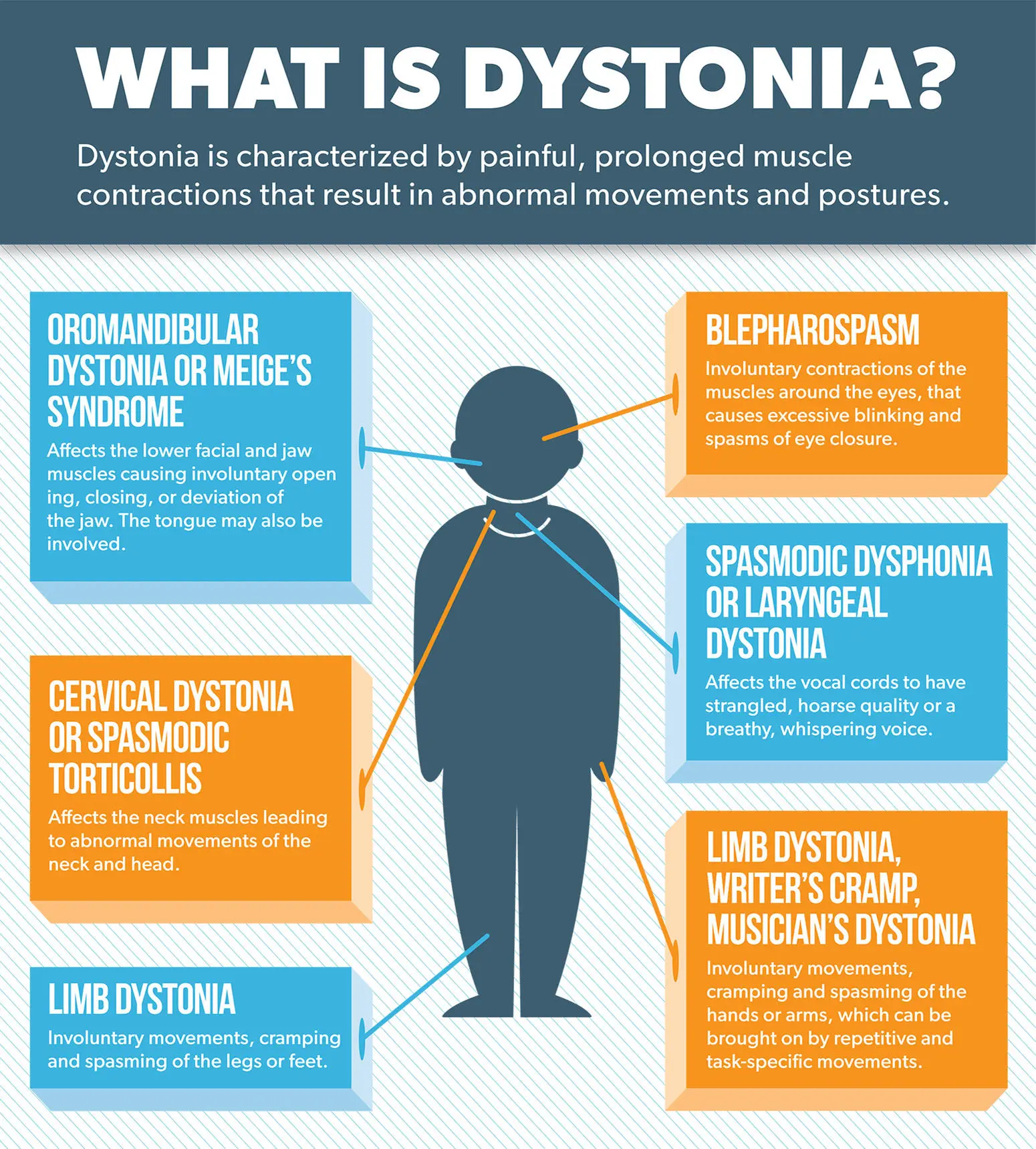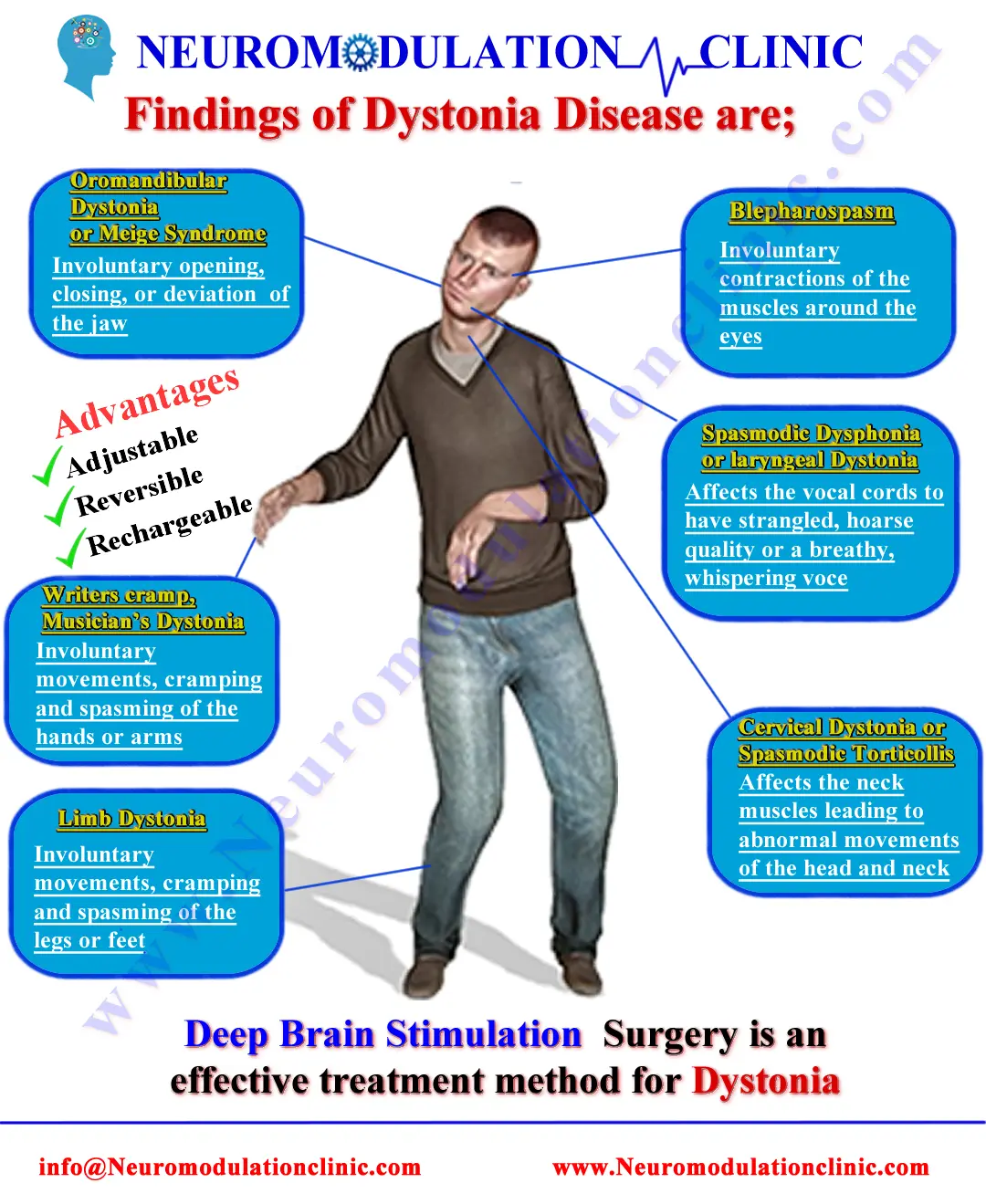Can Dystonia be Cured?
Depends on cause
Treatment varies based on the underlying cause of dystonia

What is Dystonia?
Dystonia is a movement disorder characterized by involuntary muscle contractions that cause repetitive or twisting movements. It can affect one or more body parts. Treatment may include medications, botulinum toxin injections, and physical therapy.

Clinical Aspects

Characteristics
Involuntary muscle contractions causing repetitive movements

Symptoms
Muscle spasms, abnormal postures

Diagnosis
Clinical examination, sometimes imaging studies

Prognosis
Variable; depends on the type and response to treatment

Complications
Impaired mobility, pain, complications of treatment
Etiology and Treatment

Causes
Genetic factors, neurological disorders

Treatments
Medications, botulinum toxin injections, physical therapy

Prevention
Medications, botulinum toxin injections, physical therapy
Public Health and Patient Perspectives

Epidemiology
Neurological movement disorder causing involuntary muscle contractions

Patient Perspectives
Management is tailored to the specific type of dystonia and its impact
While the information presented here reflects the current knowledge about these conditions and treatments, it’s important to understand that individual cases may differ. Consulting with a healthcare professional is crucial for accurate information tailored to your specific needs.
Share: